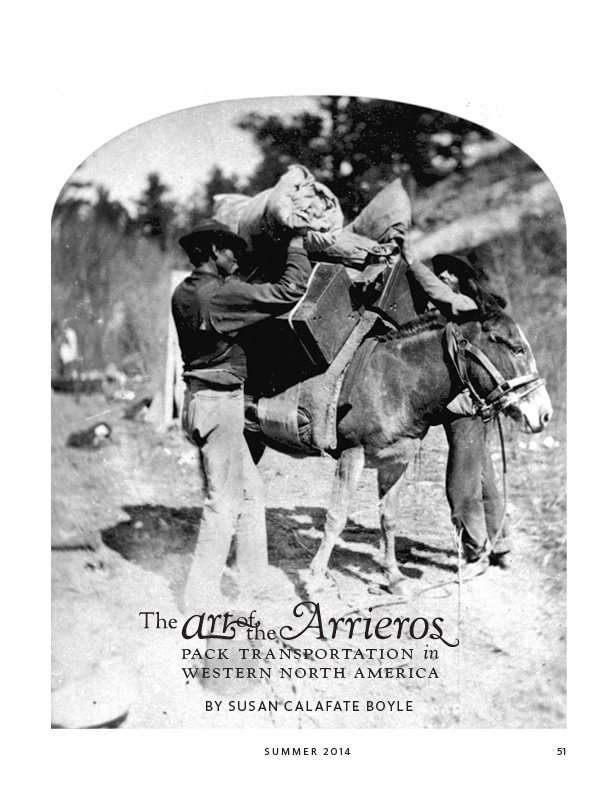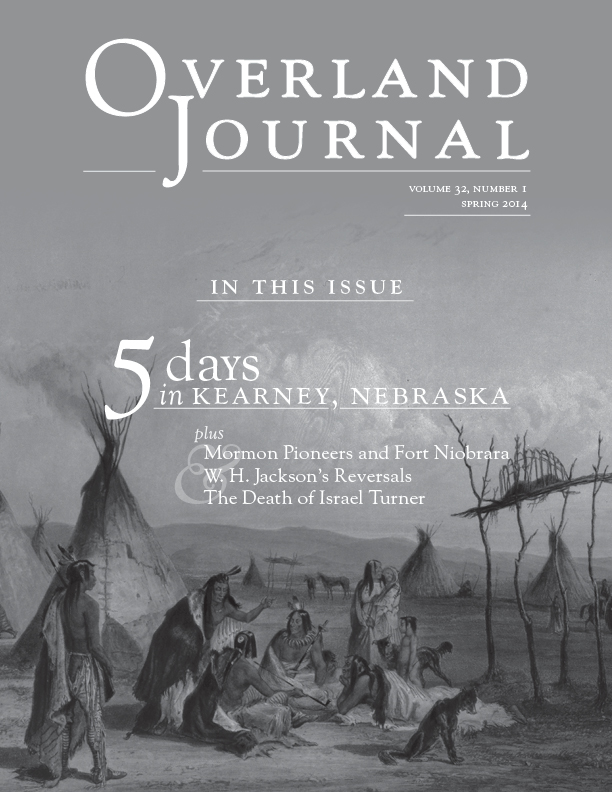This article from Abebooks.com reminds us of one of the perks of finding a dread mistake in a book:
typos can help discern a first printing from a second
A mistake is always terrible to realize, but it is a bit of a gift to future bibiliographers.
This article from Abebooks.com reminds us of one of the perks of finding a dread mistake in a book:
typos can help discern a first printing from a second
A mistake is always terrible to realize, but it is a bit of a gift to future bibiliographers.
A pretty happy message to wake up to, huh?
Good morning!
Thank you, thank you, thank you for another SUPERB presentation of our work!!! I just downloaded the file that Stephanie sent and I started to cry. I am so happy with what you have done with our manuscript. NOBODY could have equaled your creative eye and attention to detail. I thank you so very much.Time to start looking at the pages!!! This is like winning the lottery!
 One of my favorite parts of the design for Overland Journal is the title page for each article. Shown here is the feature article from the summer 2014 issue, which was completed in August. Interesting lettering on top of a striking image help catch the reader’s eye and draw them in to the text, and it gives me a chance to use swashes and ornaments, like that loop off the ‘s’ in ‘arrieros’.
One of my favorite parts of the design for Overland Journal is the title page for each article. Shown here is the feature article from the summer 2014 issue, which was completed in August. Interesting lettering on top of a striking image help catch the reader’s eye and draw them in to the text, and it gives me a chance to use swashes and ornaments, like that loop off the ‘s’ in ‘arrieros’.
Shown here also is a variation on the idea. This is a regular column run in each issue, but we usually only have two pages to devote to it. The author often sends a beautiful image that would not make nearly the impact if run at a quarter or even half page, but the space considerations prevented giving it a full page with just a title. So here we do the title plus the first paragraph on the nice open sky, while allowing the subject of the photo (Oregon Trail landmarks Courthouse Rock on the left, Jail Rock on the right) much larger than we’d otherwise be able to. I also like to set off the beginning of articles by this author (Dave Welch), as the topic of trail preservation is an important one to the organization (the Oregon-California Trails Association), and his writing style–not too flowery and to the point–suits the highlight.
Here’s an interview with historian extraordinaire Will Bagley on his newest book, South Pass: Gateway to a Continent (Norman: University of Oklahoma Press, 2014).
I had the privilege of editing and designing this book last year. Will is one of the best writers I know, and working on his texts is always a joy. This is a narrative book (as opposed to one made up of primary source documents) and very easy to read, in a style similar to Will’s other series for the University of Oklahoma Press, Overland West: The Story of the Oregon and California Trails.
Will is a great storyteller and knows how to knit all of the background goings-on into a comprehensive lesson. He laughs throughout the interview–his delight in the material is clear and infectious.
South Pass was the easiest way over the Rockies, used by Indians, fur traders, missionaries, forty-niners, and Mormon pioneers. It was also a site crossed by the Pony Express, stagecoaches, and the telegraph. Named a National Historic Landmark, South Pass is one of the few places in the country where the trail to the West has remained untouched, where we can go and really see the world that the pioneers saw 150 years ago. In his afterword, Will writes about the legacy of the area and the importance of its preservation:
Even better, with the American West seemingly doomed to have its public resources privatized, encouraging a swift and brutal transformation of our natural landscape into industrialized “sacrifice zones,” South Pass belongs to you and me. As the twenty-first century begins, international corporations increasingly desire and demand unfettered access to the gold, oil, gas, coal, and the rare earths hidden in our nation’s last, best places; they even strive to monetize—a horrific word—the wind and sun. Yet virtually all of South Pass is unchanged, and its classic open emptiness still belongs to the American people.
This epigraph from the book emphasizes the history still seen there:
Stand on South Pass now, and you will find it as still and peaceful as if no clamor of empire had ever surged through it. Antelope will drift close to see what you are up to; no smokes stain the dark blue sky; the riotous rendezvous of the fur hunters, held for a dozen years after 1825, have left neither mark nor echo, not even a tepee ring. The wheels that between 1836 and 1869 rocked and creaked and squealed up the Sweetwater and down past the westward-falling trickle of Pacific Creek have left ruts that are still visible in places among the sage and bunchgrass if you look hard, but modern travel does not go this way. Both Highway 30 and the railroad cross the divide at Creston. All that crosses South Pass now is Wyoming 28, a secondary road. And here is a lesson, not only in history, but in the fallibility of prophecy based on false premises.
–Wallace Stegner, Marking the Sparrow’s Fall
This is the eighth anniversary of Capital A Publications! I remember my very first day very clearly–spent in my temporary office, working on the index for The Land Beyond: Italian Migrants in the Westward Movement, by Dr. Gloria Lothrop, and later going to the office-supply store to buy a big bag of rubber bands. Since then, I’ve moved into a real office, but I’m still going through that stash of rubber bands.
My workflow has improved over the course of producing nearly ninety (!) books and over sixty journal issues since that day in 2006, but I continue to do indexes and remain fascinated by the materials and humbled by the amazing authors and brilliant collaborators I have had the pleasure of working with.
 A new book just came in from the printer, and I’m very excited about it. George Carson: Los Angeles Pioneer, by Judson A. Grenier, is another collaboration with the Historical Society of Southern California. Grenier’s association with the Carson family began in 1972, so the book has been a long time coming! The result of his years of labor is an easy read, with a lot of photos that put faces to the many Carson family members discussed in the biography.
A new book just came in from the printer, and I’m very excited about it. George Carson: Los Angeles Pioneer, by Judson A. Grenier, is another collaboration with the Historical Society of Southern California. Grenier’s association with the Carson family began in 1972, so the book has been a long time coming! The result of his years of labor is an easy read, with a lot of photos that put faces to the many Carson family members discussed in the biography.
From the back cover:
Among the pioneers who shaped the county of Los Angeles in the nineteenth century, few men played a more decisive role than George Carson. Although a city of more than ninety thousand people bears his name, history books offer little mention of him and his accomplishments.
Born along the Erie Canal in central New York, Carson was reared near Chicago, enlisted as a drummer boy during the war with Mexico and marched west to the Spanish settlement of Santa Fe, where, after discharge, he began a career supplying American outposts in the West. In 1853, he drove a flock of sheep from Mexico to Los Angeles and settled in the central city as hardware store owner and livery stable operator. Carson’s business and fraternal connections won him a seat on the town council and soon thereafter, the elected office of County Public Administrator. In 1857 he married Victoria Dominguez, daughter of Manuel Dominguez, longtime owner of Rancho San Pedro, the first Spanish land grant. Carson assumed management of the ranch and introduced large-scale sheep raising and diversified agriculture and later participated in one of the most intensive land surveys ever attempted in the county. He led the development of Redondo Beach, Terminal Island with its rail lines, the port of Los Angeles, and other communities, all from land once part of the Rancho San Pedro. At Carson’s funeral in 1901, he was celebrated as one of the most influential pioneers in local history. This biography aims to restore his place in the annals of his adopted homeland.
I copyedited and designed the text, which turned out beautifully, but the covers are the part that I am particularly proud of.
The paperback cover, shown above, has a matte cover with a shiny gloss on the white border and title. It is subtle, but I like how it highlights the signature used for the title. Because Carson has not been included in history books, I wanted his name to be very prominent in this one.
For the hardcover, we used gold stock for the end papers, which echoes the brilliant gold stamping on the front cover. As with the paperback, the George Carson signature is the focus–the subtitle and author name are blind stamped in the leather binding. It was hard to simulate in a file what the blind stamping would look like, but Pat Adler-Ingram, the head of HSSC, took the leap with me and was very pleased with the result.
—————
George Carson: Los Angeles Pioneer by Judson A. Grenier · Los Angeles: Historical Society of Southern California, 2014 · 208 pages · 56 maps and illus. · index · 7 x 10 · ISBN 978-0-914421-35-1 (hardcover); ISBN 978-0-914421-34-4 (paperback)
 The spring 2014 Overland Journal has just gone to the printer! Here is the mailing wrap (more about why we do the wrap here). On the cover of this issue is Karl Bodmer’s Funeral Scaffold of a Sioux Chief, engraving with aquatint, 1839. Museum Purchase, Museum of Nebraska Art Collection.
The spring 2014 Overland Journal has just gone to the printer! Here is the mailing wrap (more about why we do the wrap here). On the cover of this issue is Karl Bodmer’s Funeral Scaffold of a Sioux Chief, engraving with aquatint, 1839. Museum Purchase, Museum of Nebraska Art Collection.
From OJ’s editor, Marlene Smith-Baranzini:
The smart readers know that if the design isn’t great, the words also don’t come off that well. You have enhanced both.
The end product of another great collaboration!
I saw this artwork at the new Journalism building at the University of Montana, where I went to school. The artist is Lloyd G. Schermer, the former publisher of the Missoulian, and the sculpture is composed of antique wood type, engravings, and foundry type.